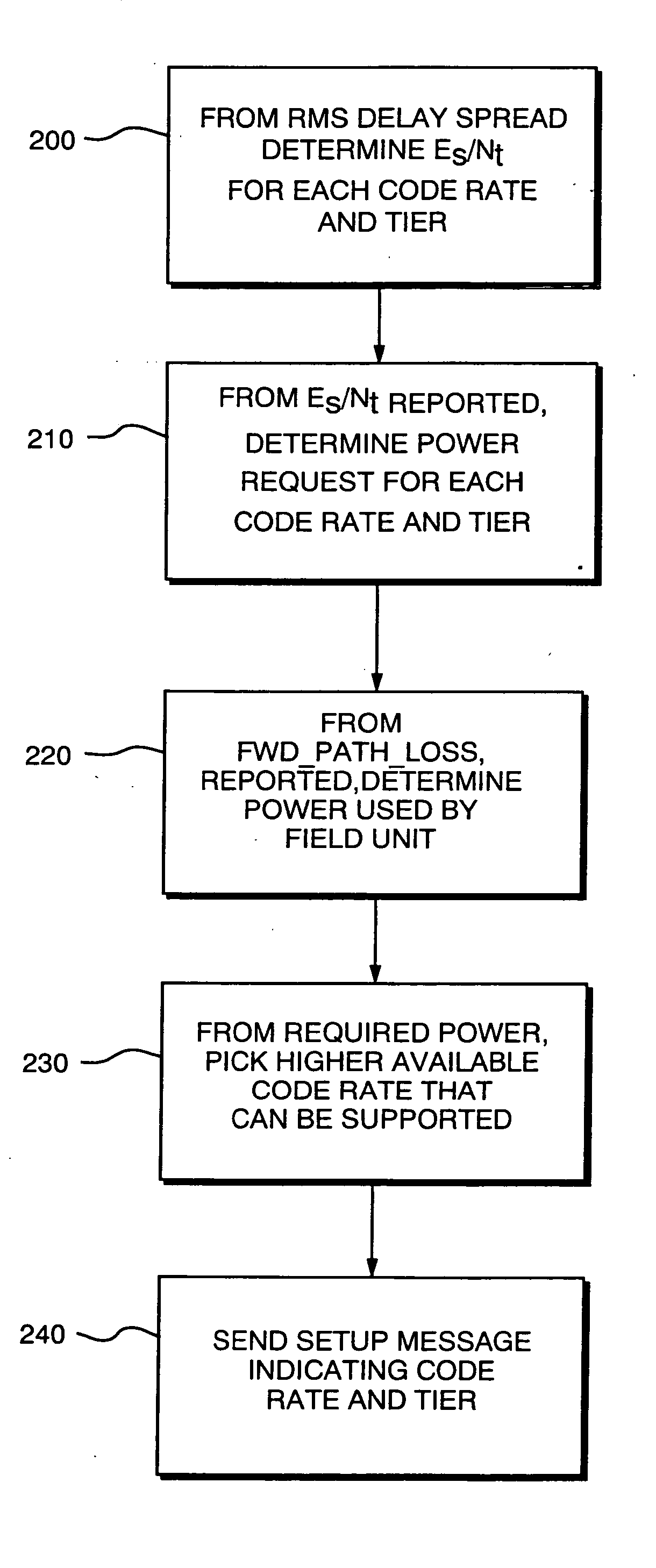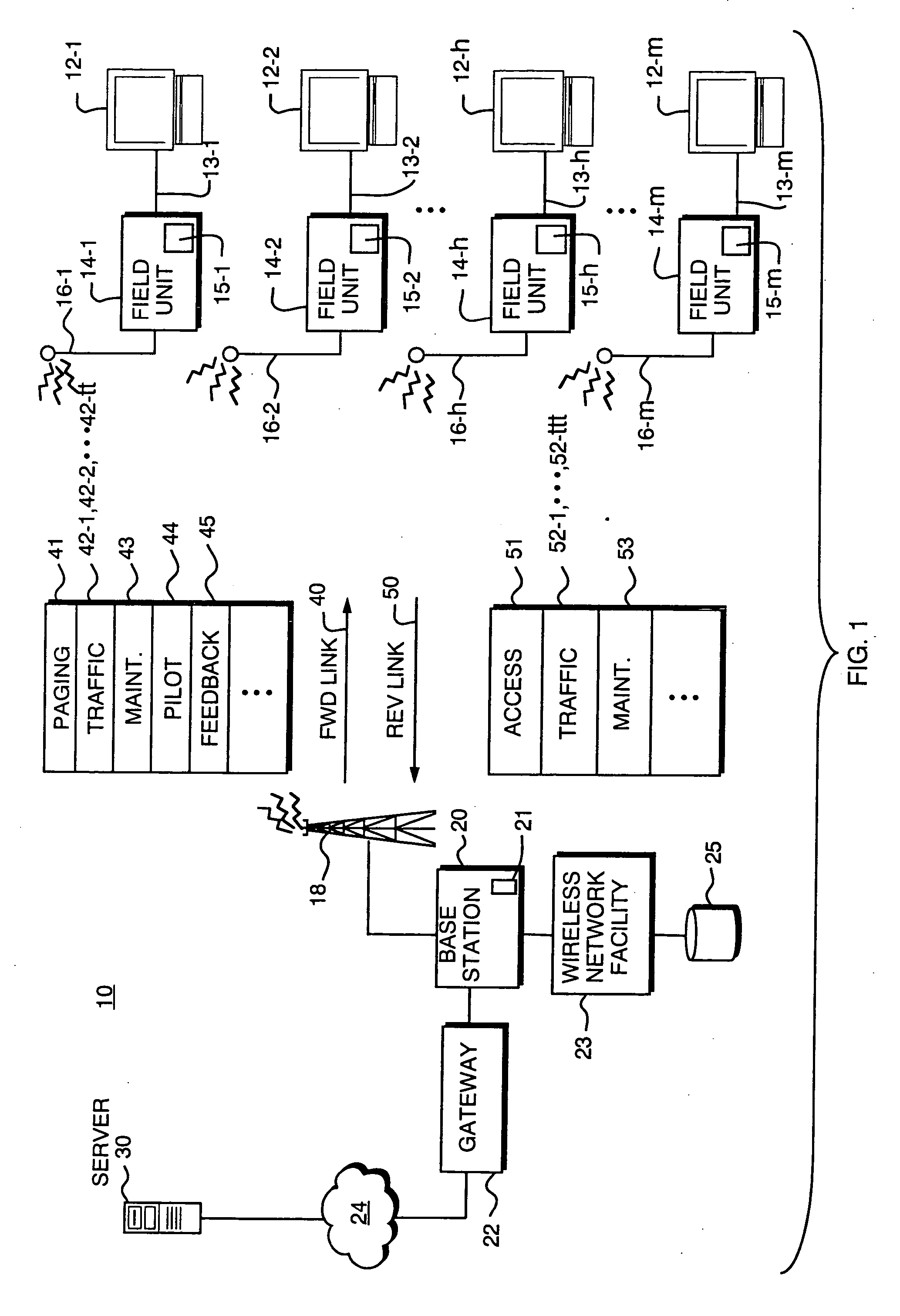Qualifying available reverse link coding rates from access channel power setting
a reverse link and power setting technology, applied in power management, data switching networks, high-level techniques, etc., can solve problems such as increasing channel interference and not improving the difficulties of co-channel interferen
- Summary
- Abstract
- Description
- Claims
- Application Information
AI Technical Summary
Benefits of technology
Problems solved by technology
Method used
Image
Examples
Embodiment Construction
1. System Architecture and Introduction
[0020]FIG. 1 is a block diagram illustrating a wireless communication system 10 supporting the transmission of data at different rates for particular users, depending upon observed channel conditions for each user. As in many wireless communication systems, users compete for wireless bandwidth allocation. Hence, it is desirable that the wireless communication 10 is optimized for data throughput and, in certain applications, hi-speed bursts of data throughput. Certain aspects of the present invention are based on the recognition that the data rates assigned to a field unit transmitting over a wireless channel can be controlled so that minimally interference with other field units using the same general wireless airspace is created. Specifically, a radio frequency (RF) path loss is determined by broadcasting Effective Radiated Power (ERP) information from a central base station 20. A remote field unit 24 receives this ERP information and also d...
PUM
 Login to View More
Login to View More Abstract
Description
Claims
Application Information
 Login to View More
Login to View More - R&D
- Intellectual Property
- Life Sciences
- Materials
- Tech Scout
- Unparalleled Data Quality
- Higher Quality Content
- 60% Fewer Hallucinations
Browse by: Latest US Patents, China's latest patents, Technical Efficacy Thesaurus, Application Domain, Technology Topic, Popular Technical Reports.
© 2025 PatSnap. All rights reserved.Legal|Privacy policy|Modern Slavery Act Transparency Statement|Sitemap|About US| Contact US: help@patsnap.com



